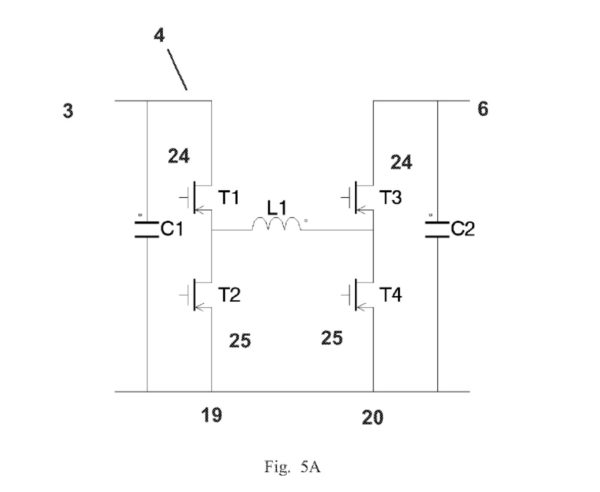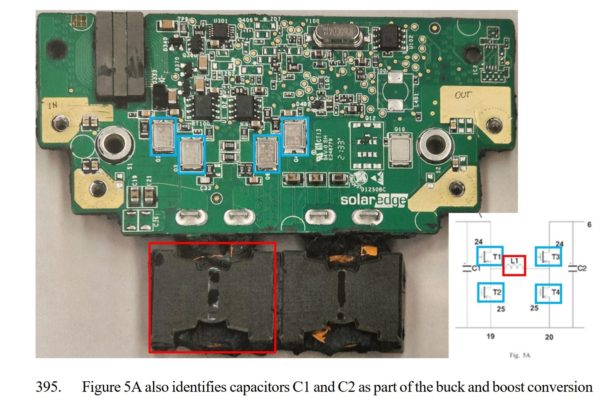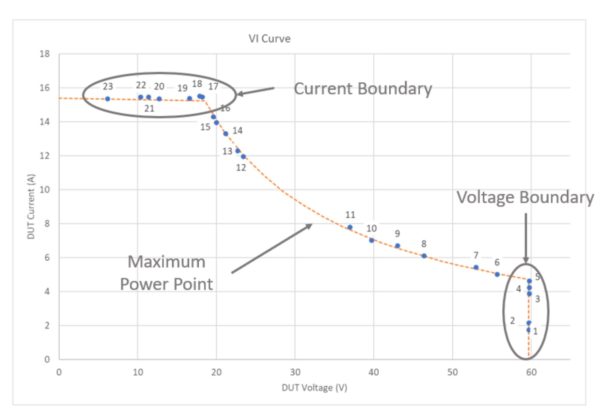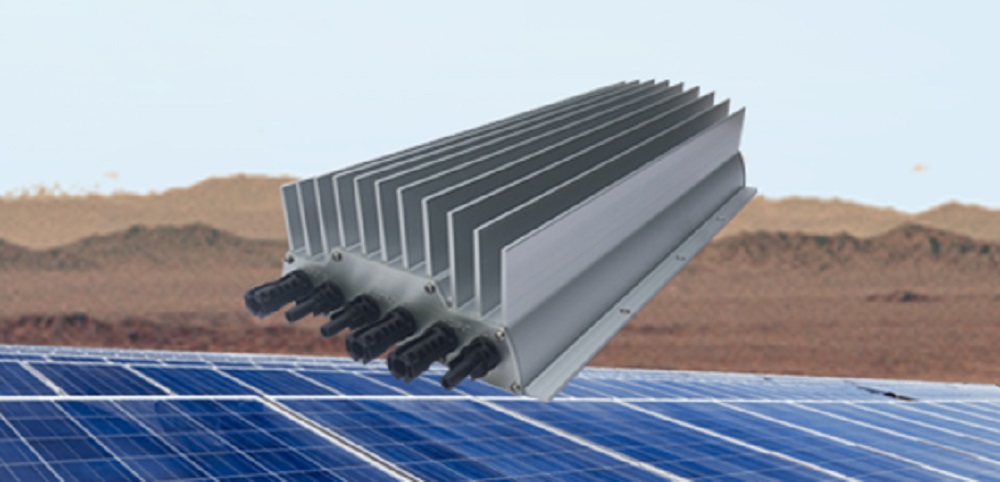Ampt, a power electronic specialist based in Fort Collins, Colorado, has filed a lawsuit against SolarEdge for allegedly violating a series of their patents. According to Ampt, the violations at the heart of the issue are “power optimizers that contain high-efficiency power converters that both allow maximum power-point output, and use operational boundary conditions that continue producing power during conditions that might otherwise require the optimizer to be bypassed.”
The filing asks that the whole of SolarEdge’s inverter and optimizer lineup be removed from the marketplace for violation of these patents. Ampt contends that other manufacturers could replace SolarEdge’s hardware if needed.

Ampt filed with two separate courts – the Count of International Trade (ITC), whose online filing can be found here, and the US District Court of Delaware whole filing can be found here.
In the ITC Complaint filing, two patents were specifically highlighted – U.S. Patents Nos. 9,673,630 (‘630) and 11,289,917 (‘917).
The ’630 patent was issued in 2017, while the ’917 patent was recently awarded on March 29, 2022. Both patents claim priority to a provisional patent application filed in 2007. Ampt notes they were founded in Colorado in 2007.
The filing includes a circuit (below) that contains both a buck and boost converter. Ampt states that this “power optimizer circuit of (their) invention…describes a dual-mode configuration that provides high efficiency for their specific use-case.”

Buck converters step voltages down, while boost converters step voltages up. Solar optimizers regulate the voltages and amperages of individual solar panels in combination with their inverter, among a string of solar panels arranged in a series circuit.
The longer form filing with the ITC court includes an image of the circuitry inside of a SolarEdge optimizer, pointing out the location of the buck-boost converter.

The filing also highlighted operational boundaries and how they interact with over current and voltage, while attempting to optimize for the maximum power point (MPPT).
To this author’s very limited electrical knowledge, all inverter manufacturers use these two techniques to manage solar power. Solar charge controllers in off-grid systems specifically focus on these designs in order to keep voltages consistent when charging batteries from variable output solar panels.

A statement that Ampt could replace SolarEdge hardware was amended to say that other manufacturers could replace SolarEdge hardware, if needed. A further amendment was made on 8/25/2022 with the following:
It is not possible for pv magazine to check the correctness of patent claims and the arguments of the companies. For fairness, we gave SolarEdge the opportunity to respond, and they provided the following:
“SolarEdge and AMPT have been litigating a dispute involving a patent family filed by SolarEdge and a patent family filed by AMPT before the United States Patent and Trademark Office (USPTO) for many years. Recently, the USPTO awarded priority of invention to SolarEdge, cancelled the claims of AMPT’s patents, and awarded the patent claims in these AMPT patents to SolarEdge. It appears that having lost before the USPTO, AMPT is now shopping around its claims to other courts. SolarEdge anticipates a vigorous defense of these new cases.”
This content is protected by copyright and may not be reused. If you want to cooperate with us and would like to reuse some of our content, please contact: editors@pv-magazine.com.









Filing a patent on basic electrical circuitry that has been in use and implemented in other manufacturers components for years, is crazy, especially if the Government has mandated certain safety protocols be used. Patenting a specific circuit board with those components can be bypassed by using a different lay out or placement on the board but the fact that the two boards are very similar in their lay out could be for cooling purposes that the two companies decided to optimize the placement for. If one company can prove the circuit board itself has been duplicated, then they have a case but for the genral electrical wiring or circuiting that is “common practice”, they do not.
Ampt is boosting their lawsuit while SolarEdge is bucking it. Just a little joke for SMPS designers 😉
What to do if solar edge sold me a solar system two years in and my inverter-board has failed to work twice I have be waiting for a new board for three months I didn’t know if wasn’t working they keep telling me that the inverter is on order it’s under warranty.can you help me what to do thank you
I’m on my third inverter since system start-up in 2018. The most recent failure also involved three months of non-production waiting for a replacement inverter under warranty.
Given the tight and proprietary integration between optimizers and inverter, it would be quite expensive to switch to more reliable technology. My best alternative would be to buy a spare inverter, to be held in inventory by my installer for my non-exclusive use. I just wish they would see the wisdom in that and take my money.
Ok now this! I just found out couple days my solar not working for over year! I’m so pissed off! Also 3G antenna !
Call sunnova to take over those systems and we can come out and do maintenance and replace any parts or inverters.
Even if the system was not installed by us we are all over the 50 states
The max power point curve for a solar cell or panel should take the shape of a rounded box corner. The one in this article doesn’t match that concept. See for example Wikipedia article on Maximum_power_point_tracking.
You get rounded box corner when plotting power against voltage (see your Wikipedia link). This article plots current against voltage. Two different things, and two different shapes of the curve.
The curve shown in the above article is more of a Constant Power operating curve with current and voltage limits.
A typical rounded box curve of current vs voltage for a solar cell operating output is shown here: https://en.wikipedia.org/wiki/Maximum_power_point_tracking#/media/File:Solar-Cell-IV-curve-with-MPP.png
The DC converter has to seek the corner point where maximum power is extracted from the solar cell while driving current onto the array’s output DC bus.
How do I get refund for lost of solar due to inverter replacement for three months waiting for converter?
Small Claims Court or if your solar installer had you sign an Arbitration clause, take them to arbitration. Just have your previous monthly bills for the same months you lost, from the previous two years to make your claim. Also bring in your original contract that stated how much electricity your system would produce once installed and if you can show the delay reduced that total amount, you have a good case. When you consider the company is paying $3,000.00 to $4,000.00 for that replacement inverter and did not keep any in stock and depended on the original manufacturer to keep them in stock. They should just look at your proof and send you a check without going to court. But you must get the inverter installed and working first to see what time and energy you missed out on before you file your claim. If they say they had to buy an upgraded to code inverter and you need to pay the difference, take that to court also.
I get a system from a Co.pany base I. FLORIDA. COMPANY IN QUESTION file a bankruptcy and leave the state, let me in the limbo.Others not want to continued to honor any guarantees.contacted SolarEdge to get parts still in guarantees and never get parts replaced.Im sure we have others same situation out there.
You need to make a bankruptcy claim with your state and do so before they get out of court. Even if you have a binding arbitration clause and a no class action clause in your contract, bankruptcy overrides those clauses in most states in order to get a “Share ” of their assets. In any case, your solar panels are still viable and the wires connecting them to the existing failed inverter can be used on a new inverter and Tesla or other companies have a replacement they make or can buy, that you can get for your system. Don’t expect much of a settlement but do get your system back up and running as soon as you can. Solar panels will degrade faster, in sunlight, if not connected to a working inverter or charge controller.
https://news.bloomberglaw.com/ip-law/solaredge-hit-with-trade-agency-complaint-seeking-us-import-ban
AMPT is shopping its claims to other courts. How lame.
As I understand, the issue is not the converter but the string of modules, each performing the PPT
Edward, where did you get this idea? I’ve never seen any documented evidence of this: “Solar panels will degrade faster, in sunlight, if not connected to a working inverter or charge controller.” Can you please send a link? Thanks
It said so on my installation booklet that came with my off-grid solar panels.
https://forum.solar-electric.com/discussion/23509/fact-or-fiction-bad-idea-to-leave-unconnected-panels-in-sun
The charge controllers, for off grid solar panels, shunt or close the contacts positive to negative when the batteries are full, opening the circuit to the batteries. Why would they do that if just opening the circuit would not cause any damage? Why do wind generators have a different controller that runs the shunt through a series of heater that dissipate the energy from them as heat? it could be modern solar panels can be left disconnect but my experience with older ones is they need to be shunted when left in the sun and not connected to and inverter or charge controller.
Thanks, that’s interesting. I think wind generators use a dummy load when the energy can’t otherwise be used in order to keep them from over-speeding when there’s high wind.
If that diagram is part of their lawsuit, it’s laughable. All it takes to find decades of prior art is a search for “four-switch buck-boost converter”. That design has been in use since MOSFETs became widely available. Simply sticking it on a solar power controller doesn’t render it patentable.
Trevor – I agree. Weren’t there BJT versions around even earlier? Then there were MOSFET and later, IGBJT versions?
While I agree that SE should be out of business, it’s not because of patents. It’s because of the insane failure rates of the hardware. Perhaps they have saved Ampt a lot of headache by bringing this design to market to only prove it is a failure. Also, if Ampt is successful, that leaves the rest of us with huge bills to strip out and replace our SE infrastructure which is guaranteed to fail quite often. If I can’t get a replacement from SE, albeit taking 2 months to process, then I’m in it for a lot more money. How about someone sue SE for the trash they sell so I can get a free replacement with a different brand that might actually run a full year. I am quickly coming to the realization that I’m going to have to pay someone to rip this trash out and put something quality in.
is this thread still open?